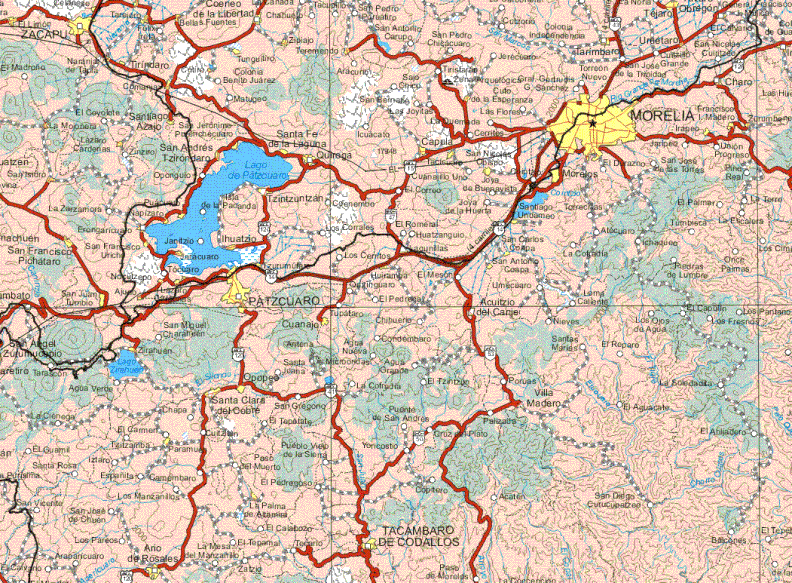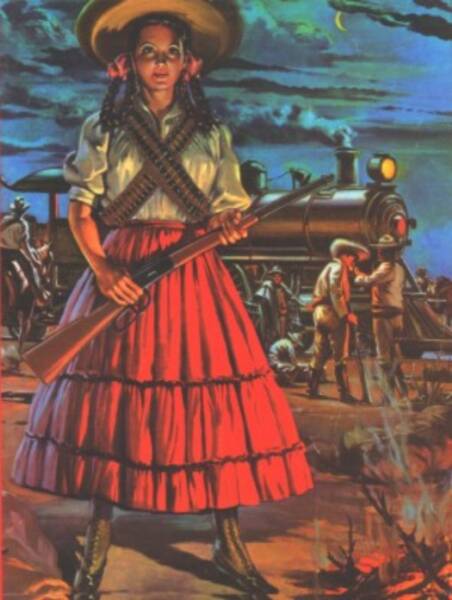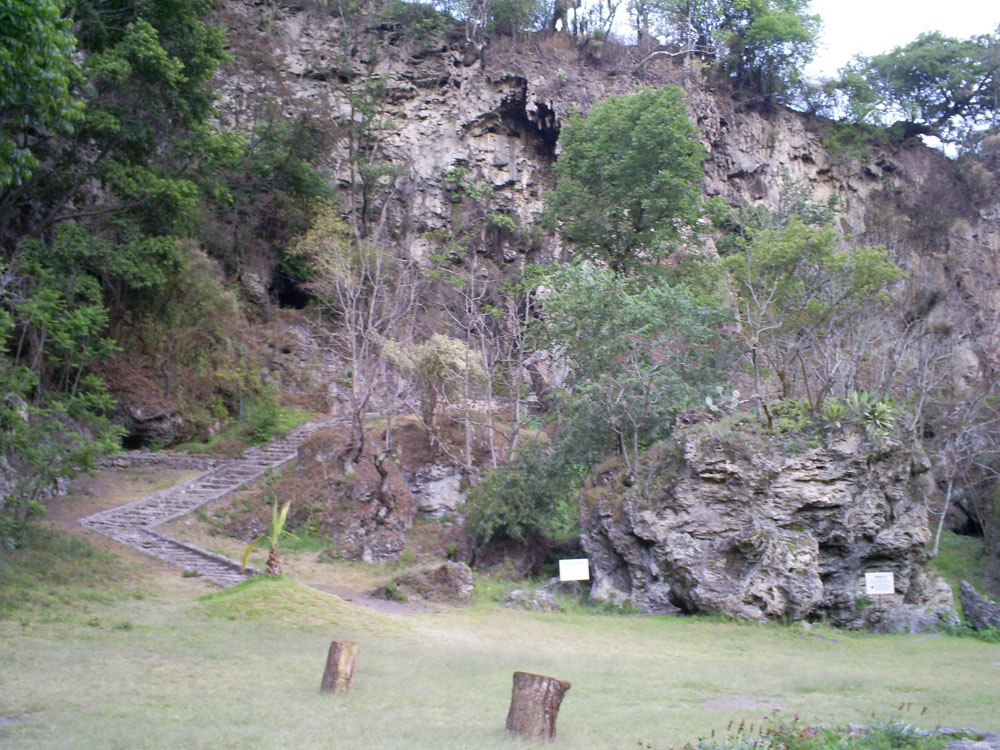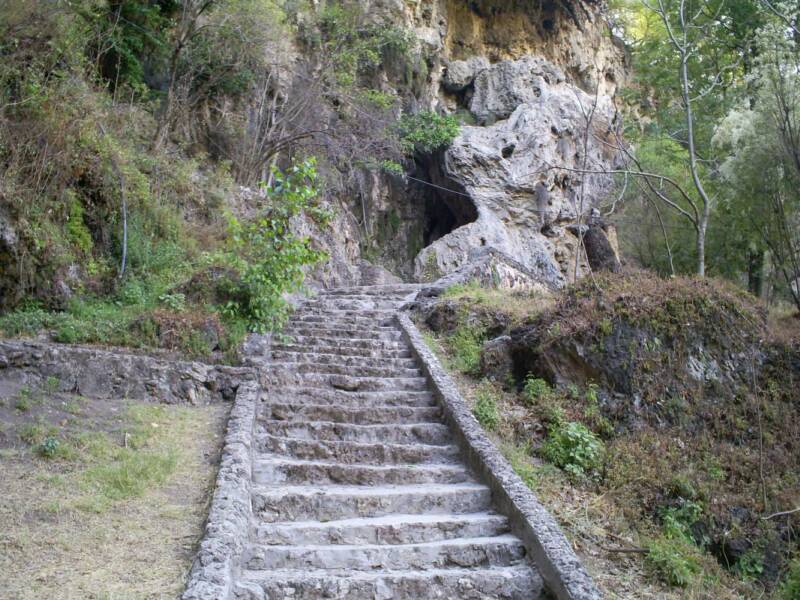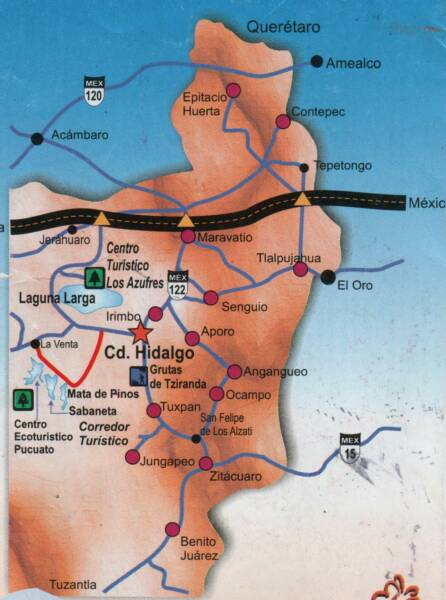 | ||||||
Day Trips
Lake
Patzcuaro
El Estribo: A Scenic Overlook
For a good view of the town and the lake, head for the lookout at El Estribo, on the hill 3km (2 miles) west of town. Driving from the main square on Calle Ponce de León and following the signs takes 10 to 15 minutes on an unpaved road. Walking up the steep hill will take about 45 minutes. Once you reach the gazebo, you can climb more than 400 steps to the summit of the hill. The gazebo area is great for a picnic; there are barbecue pits and sometimes a couple selling soft drinks and beer.
Janitzio
No visit to Pátzcuaro would be complete without a trip on the lake to one or more of the islands. A hilltop statue of José María Morelos dominates the island of Janitzio. The village church is famous for the annual Days of the Dead ceremony, held at midnight on November 1. Villagers climb to the churchyard carrying lit candles in memory of their dead relatives, then spend the night in graveside vigil. The long day begins October 30 and lasts through November 2.
The cheapest way to get to Janitzio is by colectivo launch, which makes the trip when enough people have gathered to go, about every 20 to 30 minutes from about 7:30am to 6pm. It's best to go during the week when fewer travelers are around. Round-trip fare is $3.50; children under 5 ride free. A private boat costs around $55 for a trip to Janitizio for 1 hour and then a cruise by the other 3 islands. Sometimes the cooperative has launches available for significantly cheaper. The ticket office on the pier, or embarcadero (tel. 434/342-0681), is open daily from 8am to 6pm. The pier is less than a kilometer (about a half-mile) from the main square, and the 5-minute taxi ride costs $2.50.
At the ticket office, a map of the lake posted on the wall details boat trips to various islands and lakeshore towns. Launches will take you wherever you want to go. Up to 20 people can split the cost.
Tzintzuntzan: Ruins & Handicrafts
Tzintzuntzan (tzeen-tzoon-tzahn) is an ancient village 15km (10 miles) from Pátzcuaro on the road to Quiroga. In earlier centuries, Tzintzuntzan was the capital of the Purépechan kingdom (a confederation of more than 100 towns and villages). On a hill on the right before you enter town, pyramids, called yácatas, remind visitors of the town's past. There is also an interesting church and monastery dating from the time of Don Vasco. Today, the village is known for its straw handicrafts -- mobiles, baskets, and figures (skeletons, airplanes, reindeer, turkeys, and the like) -- as well as pottery and woven goods. Several open-air woodcarving workshops, full of life-size wooden saints and other figures, are across from the basket market.
Santa Clara del Cobre: Copper Smithery
About 30 minutes away by car (a $10 taxi ride), Santa Clara del Cobre is a good side trip if you want to purchase copper items or see how copper is worked. Although the copper mines of pre-Conquest times have disappeared, local artisans still make copper vessels using the age-old method of hammering pieces out by hand. They don't work on Sunday and are strict observers of "San Lunes" -- taking Monday off to recover from the weekend. On other days, the sound of hammering fills the air. If you want to see someone practicing the craft, go to one of the larger stores and ask if you can visit the taller (studio). You can also visit the Museo del Cobre (Copper Museum), a half-block from the main plaza at Morelos and Pino Suárez. The museum section of the building displays copper pieces that date to pre-Columbian times. A sales showroom to the left of the entrance features the work of local craftsmen. Admission is 50¢; the museum is open Tuesday through Sunday from 10:30am to 3pm and 5 to 7pm.
The National Copper Fair is held here each August. It coincides with the Festival de Nuestra Señora de Santa Clara de Asis (Aug 12) and the Festival of the Virgin of the Sacred Patroness (Aug 15), with folk dancing and parades. For information, call the tourism office in Morelia. Buses for Santa Clara leave every few minutes from the Pátzcuaro bus station.
Tupataro & Cuanajo: A Historic Church & Hand-Carved Furniture
The turnoff for these colonial-era villages is approximately 32km (20 miles) northwest of Pátzcuaro, off Highway 120 on the way to Morelia. The narrow paved road passes first through tiny Tupátaro (pop. 600), which in Tarascan means "place of tule of Chuspata" (tule means "reed").
Just opposite the small main plaza is the Templo del Señor Santiago Tupátaro, with its beautifully painted 18th-century ceiling -- a rare surviving detail. Restored in 1994, it's still the parish church but is overseen by the Institute of Anthropology and History. The church was built in 1775 after the miraculous discovery of a crucifix formed in a pine tree. Indian artists painted the entire wood-plank ceiling with scenes of the life and death of Christ and Mary. The magnificent gilt retablo (altarpiece) still intact behind the altar, features Solomonic columns and paintings. Santiago (St. James) is in the center of the retablo, and the face of the Eternal Father is above him. The sign of the dove crowns the retablo. There's no admission charge, and photography is not permitted. The church is open daily from 8am to 8pm. Days of religious significance include the Tuesday of Carnaval week and July 25, which honors Santiago.
Cuanajo (pop. 8,000) is 8km (5 miles) farther. It's a village devoted to hand-carved pine furniture and weaving. On the road as you enter, and around the pleasant, tree-shaded main plaza, you'll see storefronts with colorful furniture inside and on the street. Parrots, plants, the sun, the moon, and faces are carved on the furniture, which is painted in bright colors. Furniture is also sold at a cooperative on the main plaza. Here you'll also find soft-spoken women who weave tapestries and thin belts on waist looms. Everything is for sale. It's open daily from 9am to 6pm. A new highway runs directly to Cuanajo from Pátzcuaro.
Festival days in Cuanajo include March 8 and September 8, both of which honor the patron saint Virgin María de la Natividad.
Ihuatzio: Tule Figures & Pre-Hispanic Architecture
This little lakeside village is renowned for its weavers of tule figures -- fanciful animals such as elephants, pigs, and bulls, made from a reed that grows on the edge of the lake -- and for some ruins widespread through the area. Kevin Quigley, an American from San Francisco, and Arminda Flores, a Purépecha, live just outside the village (Casa Santiago; tel. 434/344-0880; mananawood@ml.com.mx). They rent comfortable rooms to guests, usually small groups, and Kevin, who has lived in the area for many years, takes people around the area, explaining the local culture, the society, and the local crafts. The turnoff to Ihuatzio is a paved road a short distance from the outskirts of Pátzcuaro on the road to Tzintzuntzan.
Zirahuen: A Pristine Lake
If you want to visit one of the few lakes in Mexico that remains more or less in its natural state, make the trip to Zirahuén, about 11km (7 miles) west of Pátzcuaro on the road to Uruapan. There's no regular bus service, so getting to Zirahuén without a car is difficult. Lakeside restaurants serve fish.
Side Trips from Lake Patzcuaro
Los Azufres
There are hot springs pools and several places that rent cabins or rooms. Most hotels are pet-friendly. There are some good restaurants in the hotels. It is about 2 hours from Morelia, and makes a great day trip. I prefer to stay a day or two, and explore other areas nearby, and take advantage of the great thermal hot springs. Week days are less expensive and less crowded than weekends.
The Paracutin Volcano
Cascada de la Tzararacua
Parque Nacional Eduardo Ruiz
 | ||||||
GRUTAS DE TZIRANDA
Cd. Hidago, MICHOACÁN
The Caves of Tziranda are located in the town of Hidago, on highway 15,
108 k. east from Morelia
and 45 k. north of Zitacuaro
<-Morelia
Combis leave from Patzcuaro's main bus station to Eronga regularly until about 8:30 pm. They go down the Libramiento, pass around the glorieta at Bodega, stop at the plaza at the bottom of Av Lazaro Cardenas, cross over the train tracks at La Estacion before hitting the carreterra to Eronga.
My friend in Eronga told me that combi's depart from front of Plaza, to Quiroga, every 15 minutes. In Quiroga, the combi station is on the bypass, Calle Madero, just before it changes from 4 lanes to 2. narrow lanes, at Santos Degollado. All the combi's in Quiroga stop there, so it is easy to get to Patzcuaro, Tzintzuntzan, Capula or where every my friend wants to go.
The Erandi bus line, from Central de Autobus in Patzcuaro, goes to Quiroga (1 way=14 pesos) and on to Tzintzuntzan.
